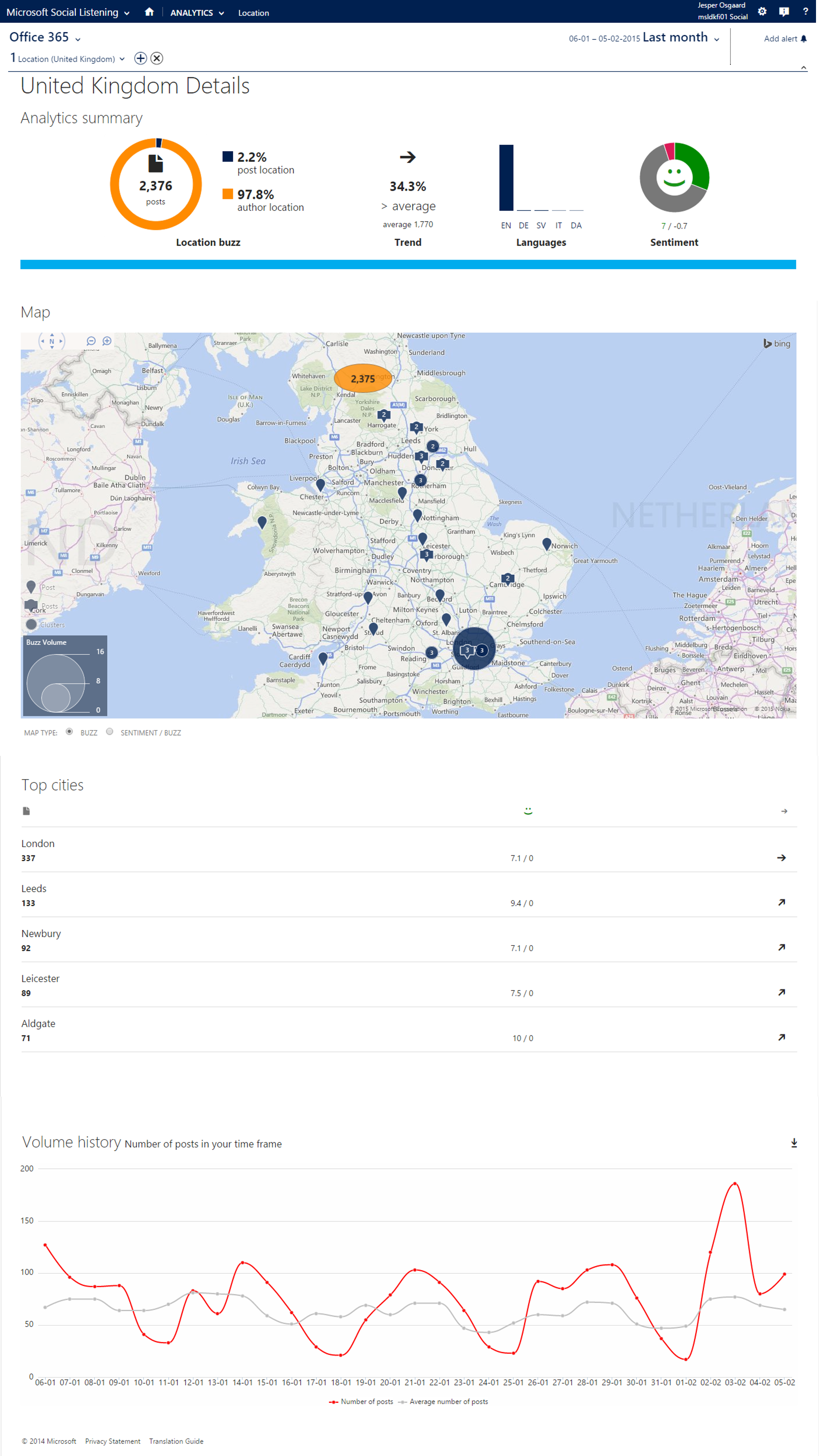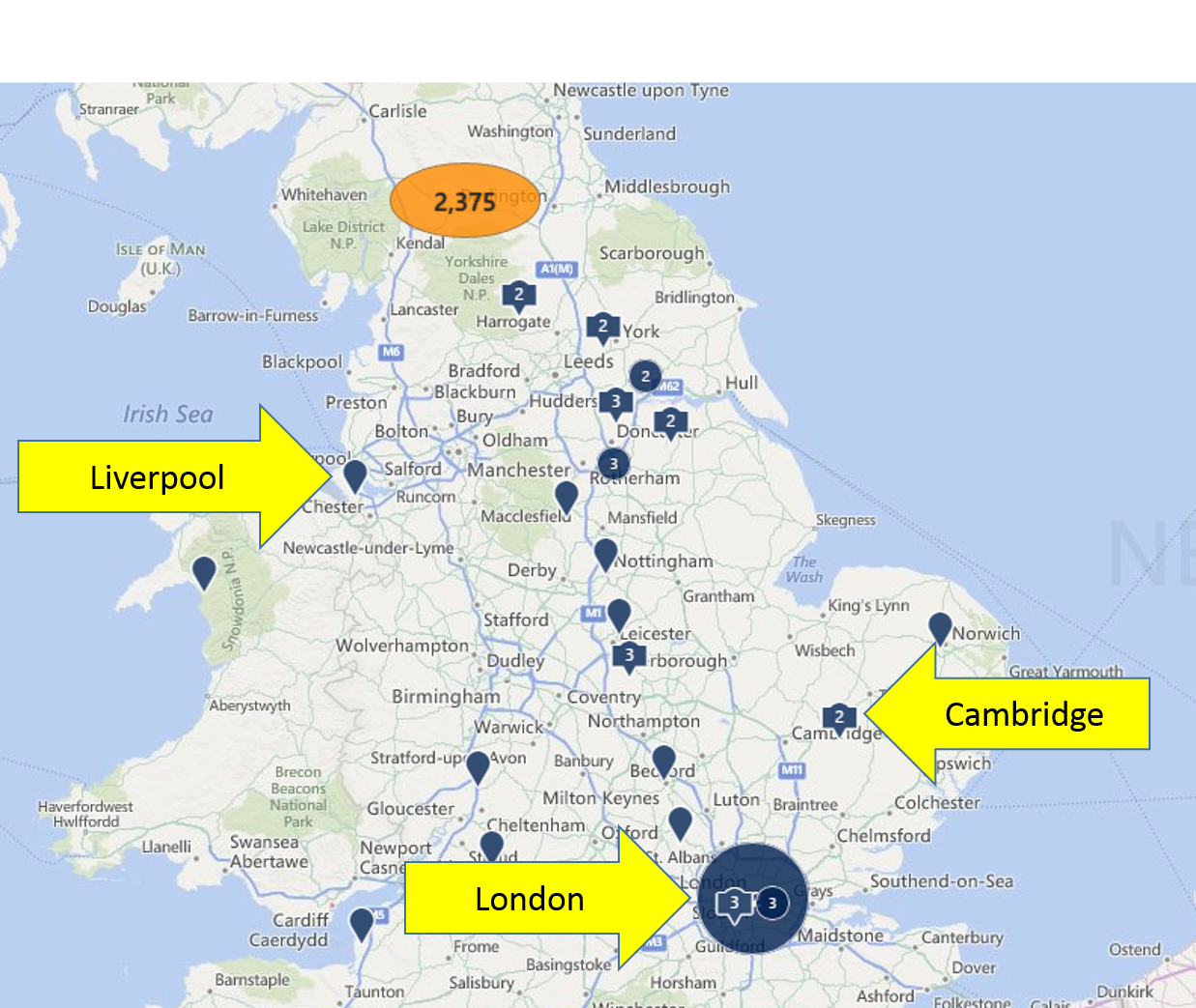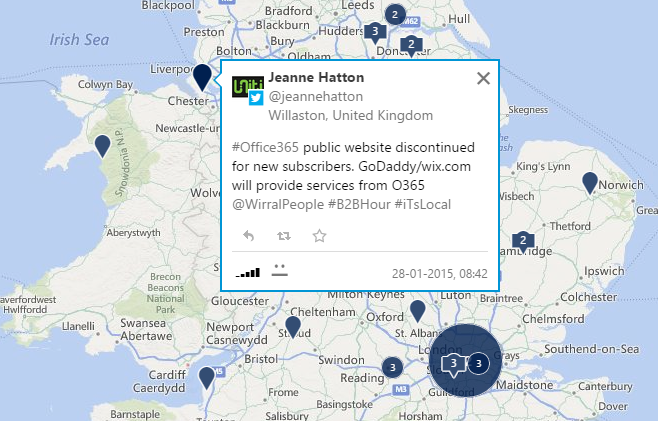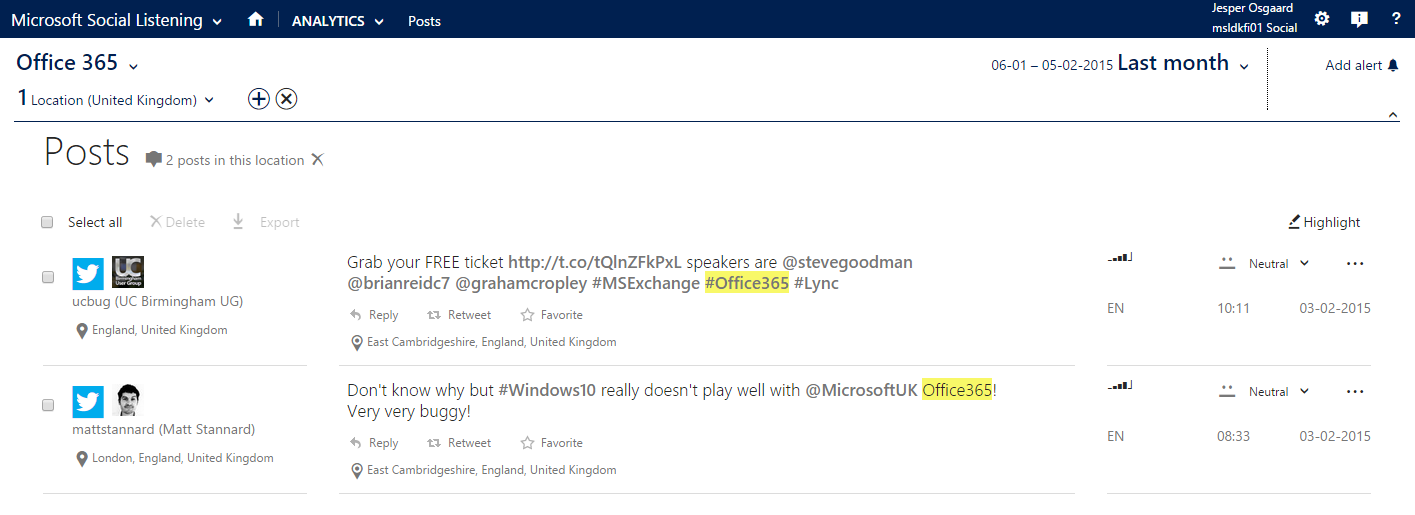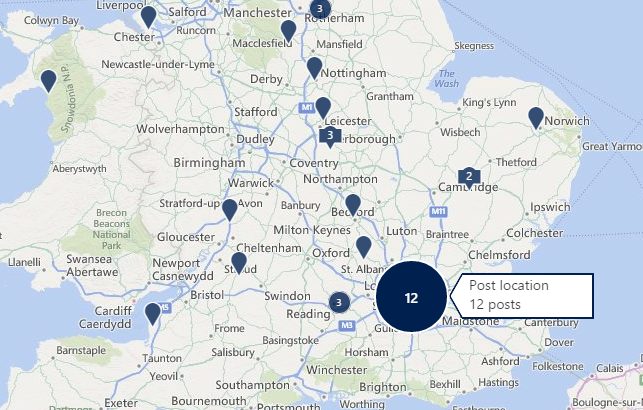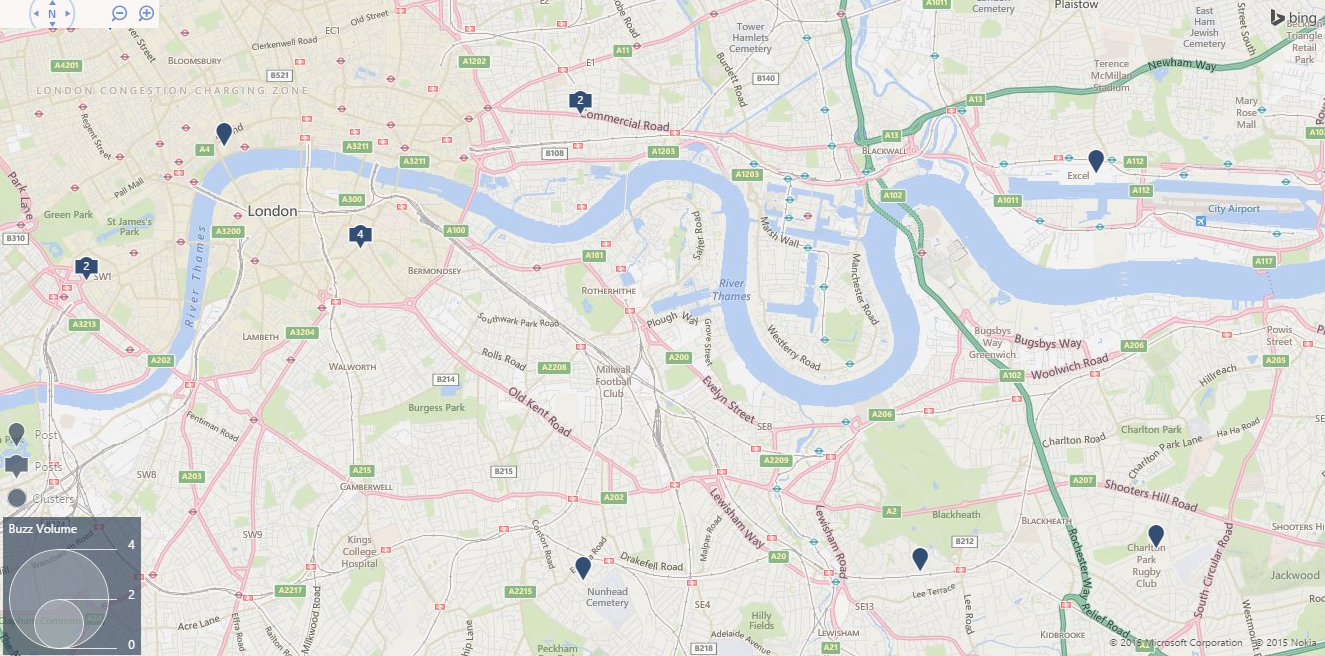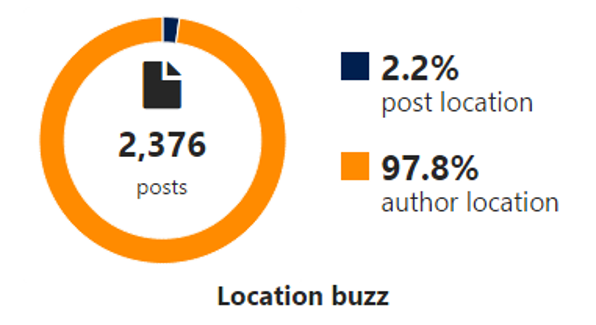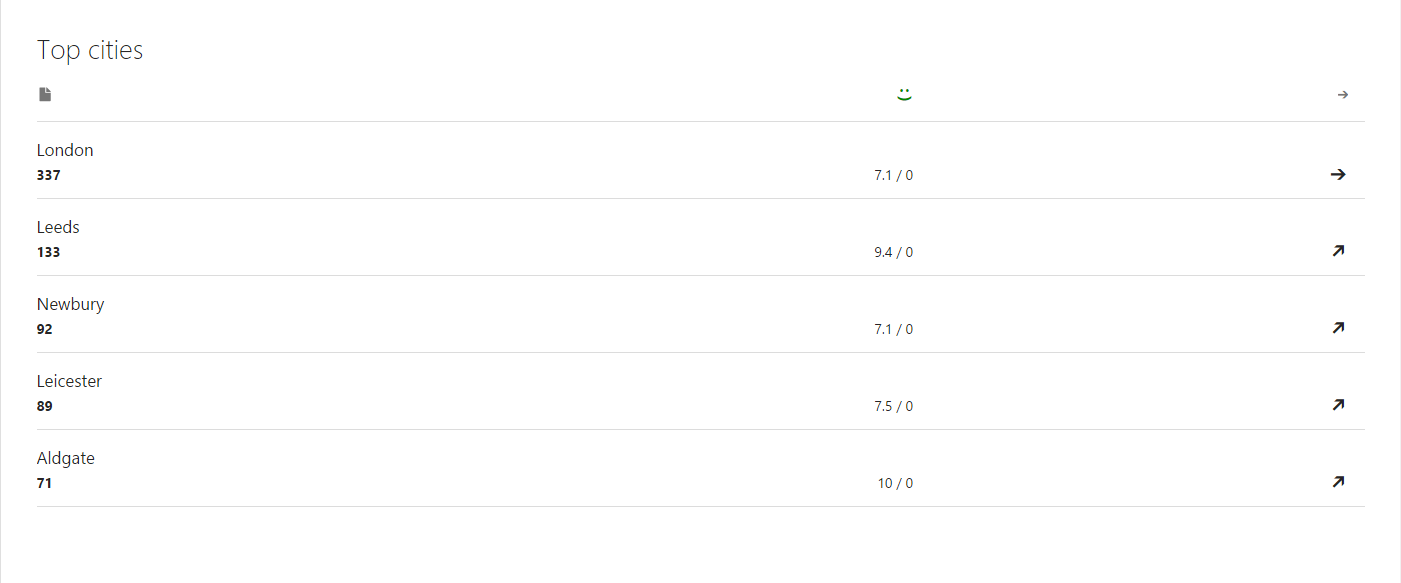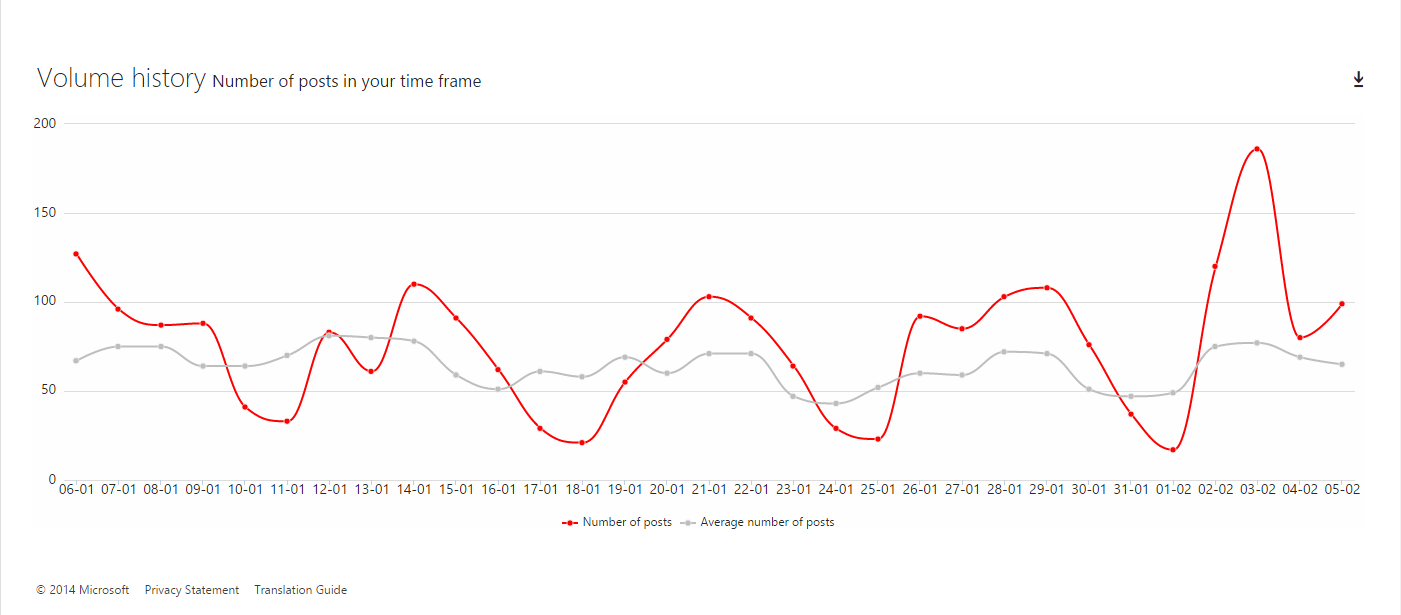Richer Location Data Analysis in Microsoft Social Listening
Social and mobile have changed the way people communicate.
Today’s customers are more informed and getting their information in new ways and from new sources. Decisions are influenced by discussions online and user reviews. In fact, 75% of B2B customers are likely to use social media to influence their purchase decisions, and customers are over 60% of the way through the sales cycle before they contact you.
Today’s customers are moving to a social world where conversations that were once done in person are now being done online. And this shift creates a huge opportunity for businesses to both listen and reach customers in ways never before possible.
Microsoft Social Listening is a powerful social listening and analytics service that your organization can use to monitor social media channels like Twitter and Facebook. Use Microsoft Social Listening to track products, brands, competitors, and campaigns globally and in real time to gain a true understanding of your customers and your business across the social web.
Further, in Microsoft Social Listening you can access location analysis by navigating to Analytics > Location.
If you drill down into a specific country or region, or apply a filter containing a single location only, you're redirected to the Location Details page, which lets you analyze the selected location in more detail.
In the below example I'm analyzing last months posts resulting from the search topic "Office 365" - but I'm analyzing only posts from the UK..
Only posts that contain location data (author location or post location) are analyzed.
- Author location: Location data that is shared by a user via a profile (for example, on a user's Twitter profile page). Consider this as an approximate value because the geographical coordinates are calculated by the system. If no post location is provided by the user, the author location is taken into account where available.
x - Post location: Location data that determines on which geographical point (latitude/longitude) a post was published. This can differ greatly between posts from the same author, depending on the applied settings when publishing the post. This is an exact value because geographical coordinates are provided with the post.
On the map you'll find different push pin symbols:
 Single post symbol - Single post in a specific location.
Single post symbol - Single post in a specific location. Multiple posts symbol - Multiple posts at the same location.
Multiple posts symbol - Multiple posts at the same location. Cluster symbol - Clusters of posts with location data in the same area.
Cluster symbol - Clusters of posts with location data in the same area.
So in this example I see a single post in Liverpool, multiple posts in Cambridge and a cluster in London (amongst other things)
To see a tool tip with more details on a location, hover over the clusters, or click or tap the pushpins on the map.
To drill down into the list of posts coming from the same location, click or tap the multiple pushpins. Eg, clicking the pushping for the multiple (two) Cambridge posts will display a filtered "Posts" list with those two posts:
Notice there is a cluster of 12 posts in London
I can zoom in as needed and actually get a pretty good indication of the posts location, down to the street level. Could be useful if eg I'm a retailer or shop owner in that neighborhood.
In addition to Trend, Languages, and Sentiment, you'll see the following visuals on the Location Details page:
Location buzz: Shows the number of posts that contain location data and the breakdown on author location and post location. If a post contains information on both location types, the post location is taken into account over the author location. To drill down to the list of posts with specific post types, click or tap a segment of the donut chart.
Locations: Provides a quick overview over the five locations that were most often found in posts of your current data set.
Volume history. A chart displaying the number of posts in your time frame compared to the last five timeframe averages
I hope you'll enjoy this new addition to Microsoft Social Listening. Stay tuned for more - we have got so much coming to help you engage with your customers.
See also
- More posts on Microsoft Social Listening - link
